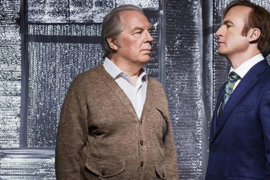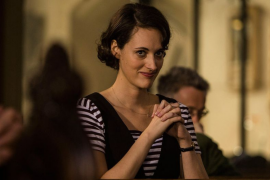THERE IS NO LONGER SUCH A THING AS A TRUE MEMORY OF THE AMERICAN WEST, if there ever was. What remains is only the dream life distilled through multiple lenses, until the object under the microscope loses definition and regains shape as some collective ghost. Historians mark the end of the Old West as we “know” it around the end of the 19th century, after the Civil War, when the so-called Progressive Era replaced an age of invention, land expansion, and fomally legal slavery. This age of ideas did not exactly look to the future, but how to fossilize and perpetuate the past. The Western genre of film set out to preserve the idea of the just-bygone era, in some ways ensuring it never passed from memory. Now, what we might imagine as the West merely echoes a series of shared images from films shot well after that age had already mirrored its matter into oblivion.
—
A Fistful of Dollars (1964), made some sixty years after the end of the Old West, was filmed in Spain as an unofficial adaptation of the Japanese samurai film Yojimbo (1961). Italian filmmaker Sergio Leone reportedly intended to reinvigorate the Western for European audiences, citing that American Westerns had dwindled because they had become unbelievable.
Distances in geography do not separate the Western from the reality of the West anymore than time does, but the dream life of any Western projects fiction as a kind of resemblance to the notion of some mythical True West. How much of what we claim to remember from that era (as if we were present) is an extraction of a copy of a copy of a copy? A photograph that intends to represent its subject as static? Imagination is always shaping reality, but what happens to our perception when we can see the gears turning underneath the machine? James Baldwin wrote that the “European dream of America—which, after all, is how we got America” is a song that returns to drive Europe mad and Americans “to a truth which has nothing to do with Europe.”
But what if we aren’t willing to hear the song for what it is—as a dream—instead of the only reality we know?
—
Consider one dream life: widely considered one of the greatest Westerns, and certainly regarded as part of the greatest Western trilogy of all time, A Fistful of Dollars heroizes a man who one day walks into a town he deems potentially profitable. He plays the town’s two families against one another and leaves them all dead to gather a “fistful of dollars” for himself.
Imagine the entire West—an entire world—existing within this film’s frame. Observe how an entire community is destroyed, how a stranger stokes its people’s worst fears and hostilities, all to gather a sum of money that benefits him and him alone.
Now separate this dream life from the one where we exist in fact. Is this world imagined, or real? Clint Eastwood, as the “man with no name,” is celebrated as a genius of business, an American icon, a rugged individualist. Does the fact that we recognize the story as some narrative thread that must be loosed from the American imagination make it any less real?
In other words: Whose reality is shaken by this film? Whose confirmed?
—
Or, try to gain distance from the dream sequence to consider one reality in particular. While watching the second film in the trilogy, For a Few Dollars More (1965), I am presented with film trivia of “reportedly” true events by Amazon Prime’s movie features.
One is that James Cosburn was first offered the role of the “man with no name,” but he wanted $25,000. Clint Eastwood, a no-name actor at the time, took the role for $15,000.
Another piece of trivia is that Sergio Leone did not intend to make a second film, but his production studio, Jolly Films, allegedly said they would not pay him for the first film without a second. Thus, the title references their dispute, how “for a few dollars more” he will take one more job.
No wonder, then, that in this sequel every man is valued at market price. The man with no name partners with another bounty hunter as they work to bring down the infamous El Indio and his partners. Throughout the film, they count how much bounty each man is worth, often to comedic effect: “10,000. 12,000. 15. 16. 17. 22… 22…”
He turns, shoots a man who was hiding: “27.”
“Any trouble, boy?”
“No, old man. Thought I was having trouble with my adding.”
Everyone is commodified and weighed for what they are worth: men as bounty, the director on the hook from his studio, Eastwood as cheaper than another star with a more profitable name. And me: using an Amazon account to decipher what separates me from the men on screen.
—
In all three films in the Dollars Trilogy, Clint Eastwood reprises his role as the man with no name, though in each he does, in fact, have a name: Joe, Manco, and Blondie, respectively. Unclear—at least to me—is whether he plays one character throughout the films or represents an amalgamation of all male Western heroes who preceded him.
As a nameless figure, Eastwood is hard to ignore as a stand-in for whiteness: he claims no identity nor backstory, and he may be a shape-shifting composite of Western characters, taken as a whole yet claiming individuality to the highest degree.
If he is a single character throughout the three films, consider that in the first he leaves an entire town dead (the body count is 109 at the end). Although he is not directly responsible for most of the deaths, how much more insidious is his ability to kill without pulling the trigger. “There’s money to be made here,” he observes, but not while the town still has a pulse.
In the second film, he is responsible for far more direct killing, each body compounding his sum total of money.
In the third, let’s not even consider the violence he perpetuates: look instead at his moral valuation as crystallized in the title: he is, apropos of nothing, the Good.
—
Although the last film in the series, I watched The Good, the Bad, and the Ugly (1966) first. I harbor no embarrassment in confessing that I did not initially know it was part of a thematic trilogy.
I harbor some embarrassment, however, for being halfway through For a Few Dollars More before I realized I was watching the trilogy in reverse order. I meant to correct my chronology after watching the third film, but I had watched the dream in reverse, retracing steps the characters had already taken, unsure if they knew we had already been here.
—
In the opening scene of For a Few Dollars More, Lee Van Cliff’s Colonel Douglas Mortimer needs the train to stop in Tucumcari. Another passenger tells him that he must be mistaken: the train does not stop there. Mortimer appears undisturbed by this information.
Just as the train is about to pass through Tucumcari, Mortimer pulls the emergency brake. The train halts, and he disembarks. The train conductor and the brakeman are concerned: why did the train stop?
When the brakeman sees Mortimer, he recognizes him as a wanted man. He gulps, then nervously corrects himself: if Mortimer wanted the train stopped, they could have stopped it for him. “It did stop,” Mortimer replies, and walks away. This scene is as ripe a metaphor for privilege as any: the thing that you wanted, but did not ask for, you can have. The whole world just seems to stop for some: this, too, is a dream, even for those of us who do not want to admit as much.
—
For many years, I denied having any connection to what people perceive in stereotypes of people from Texas. I worked diligently to not develop a Southern accent and took it as a compliment when people “up North,” as we like to say (a small self-betrayal), were surprised to learn I was from Texas, since I did not have a “country” accent.
One of the many Texas tropes I refused was growing up on Westerns: my parents liked them, but they never subjected me to them. Much later I would learn that Westerns influenced Scorsese, Tarantino, Schrader, George Lucas, Vince Gilligan, to name just a few. A copy of a copy of a copy: how much of what I admired was a Western by another name? (Amazon trivia: Clint Eastwood’s name is an anagram for “old west action.”)
Much later, maybe very recently, I stopped trying to act as if I was not from Texas: “y’all” came back into my vocabulary, claiming a progressive identity as a Texan felt politically significant, and—almost weekly—a Western on the screen, its disguise now shorn.
And yet: “Why are you looking at me when you say ‘one of us’?” Eastwood asks.
—
The man with no name seeks out a town’s “prophet” in search of information on Colonel Mortimer, at the time a mystery to him. The prophet complains that it was easier to know everyone in town before the “damn trains” came along. Anyway, the prophet says, he does happen to know the man he’s inquiring about: a bounty hunter, “just like you,” and it’s all because of the “damn trains.” The prophet’s statement seems to suggest something not stated and never returned to: why would two men become bounty hunters because of the trains?
Hypothesis: easier to leave town, to pass through unnoticed; analogous to gentrification.
—
On a trip to Europe in high school, a cab driver asked where our family was from. When someone replied Texas, he raised his eyebrows, a twinkle in his eye: “Ah, cowboys?”
We laughed, said no. What was the point of denying him?
—
In The Good, the Bad, and the Ugly, we are to understand that the central players have no stake in the Civil War. They have their own problems, and if the Confederate Army happens to win more screen time, that is only incidental to the larger narrative.
That narrative revolves around three men who are after gold: the Good, the Bad, and the Ugly. Angel Eyes assumes the role of the Bad (Van Cliff slipping into a different role within the same trilogy). He is out to kill Blondie and his partner, Tuco, as soon as they lead him to the gold. Though his actions are no more self-involved than the other two, Angel Eyes nonetheless embodies the Bad.
Impossible to ignore now (but—one would think—even then), Tuco is the only Mexican character among the three (played by Eli Wallach, it must be noted, the son of Polish parents), and he claims the role of the Ugly.
Is ugly worse than bad? If you consider that bad at least has moral valuation, then yes. Or, try this: draw a line and pinpoint various standards of human behavior in relation to one another (kind, cold, approachable, etc.). Good and bad both have fixed points on the line, however distant, however vaguely defined. Ugly does not even factor into the moral equation. (One exception: my mother used to employ “ugly” as a term for meanness, i.e., “you’re being ugly”; Tuco, however, is quite friendly despite betrayals and threats to his life).
Like the Civil War and its stakeholders, Tuco’s morality—his existence, even—is incidental to the larger battle between good and evil.
—
One exception: while the Confederate army sadly sings “The Story of a Soldier,” a white-nostalgia flip on Hamilton (“how ends the story, whose is the glory”), the scene is juxtaposed with a shot of a Mexican character being beaten within an inch of his life. Is the point to contrast their sentiment for the Confederacy with their racial violence?
Either way, try to pinpoint this disparity on a moral line, and it gets ugly.
—
El Indio, the villain in For a Few Dollars More, describes his next heist at the El Paso bank through a brief analogy that sounds like a riddle, but is merely a point in fact: “the presence of a safe alone doesn’t always signify there is money inside.”
El Indio goes on to say that the money in the El Paso bank is kept not in a safe, but a cabinet, difficult to open, with the risk of blowing up the money in the process. Later, Colonel Mortimer—posing as an ally to El Indio and his men—shows them how to properly open the safe. Inside, there are regular American dollars and Confederate dollars, but nobody mentions them (recurring motif: the Confederacy as only incidental to profits).
I have tried to tease El Indio’s words out as if they really were some riddle that Leone intended for the audience to parse, a code that—when cracked—would shed light on the Western genre, and the West, as a whole. That the presence of a dream alone doesn’t always signify there is a reality inside, or quite the opposite: that the presence of a dream does not mean there is not some hidden reality to be revealed.
Or maybe the West itself is the safe: its presence at some fixed point in history does not mean there is something to be gained from it now.
Or so I had intended to believe.
Like what you’re reading?
Get new stories or poetry sent to your inbox. Drop your email below to start >>>
OR grab a print issue
Stories, poems and essays in a beautifully designed magazine you can hold in your hands.
GO TO ISSUESNEW book release
I’ll Tell You a Love Story by Couri Johnson. Order the book of which Tim Jeffries said, “Surprising in their originality, filled with broken wisdom, and with a refreshing use of language and imagery, these are stories to savour and mull over one at a time but which add up to a satisfying whole.”
GET THE BOOK



